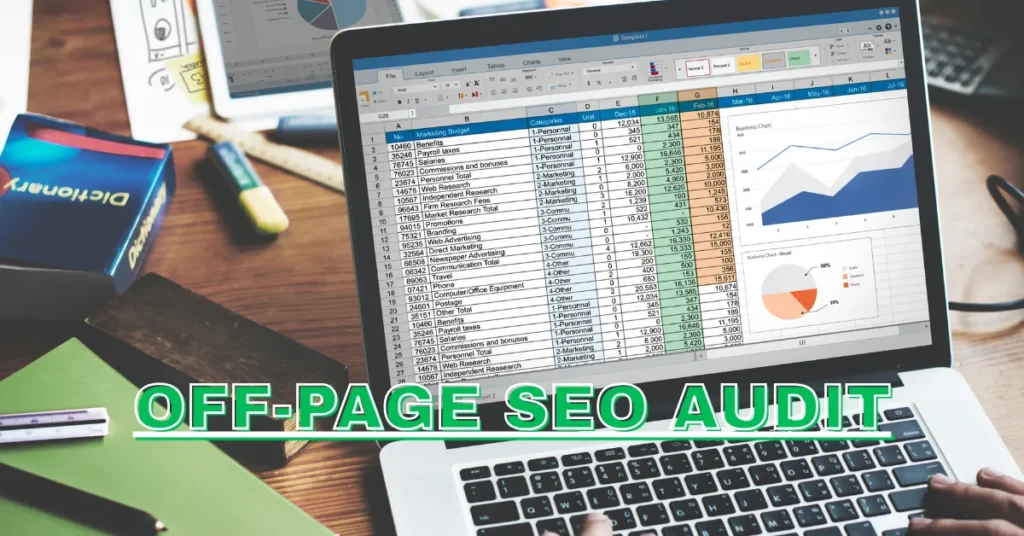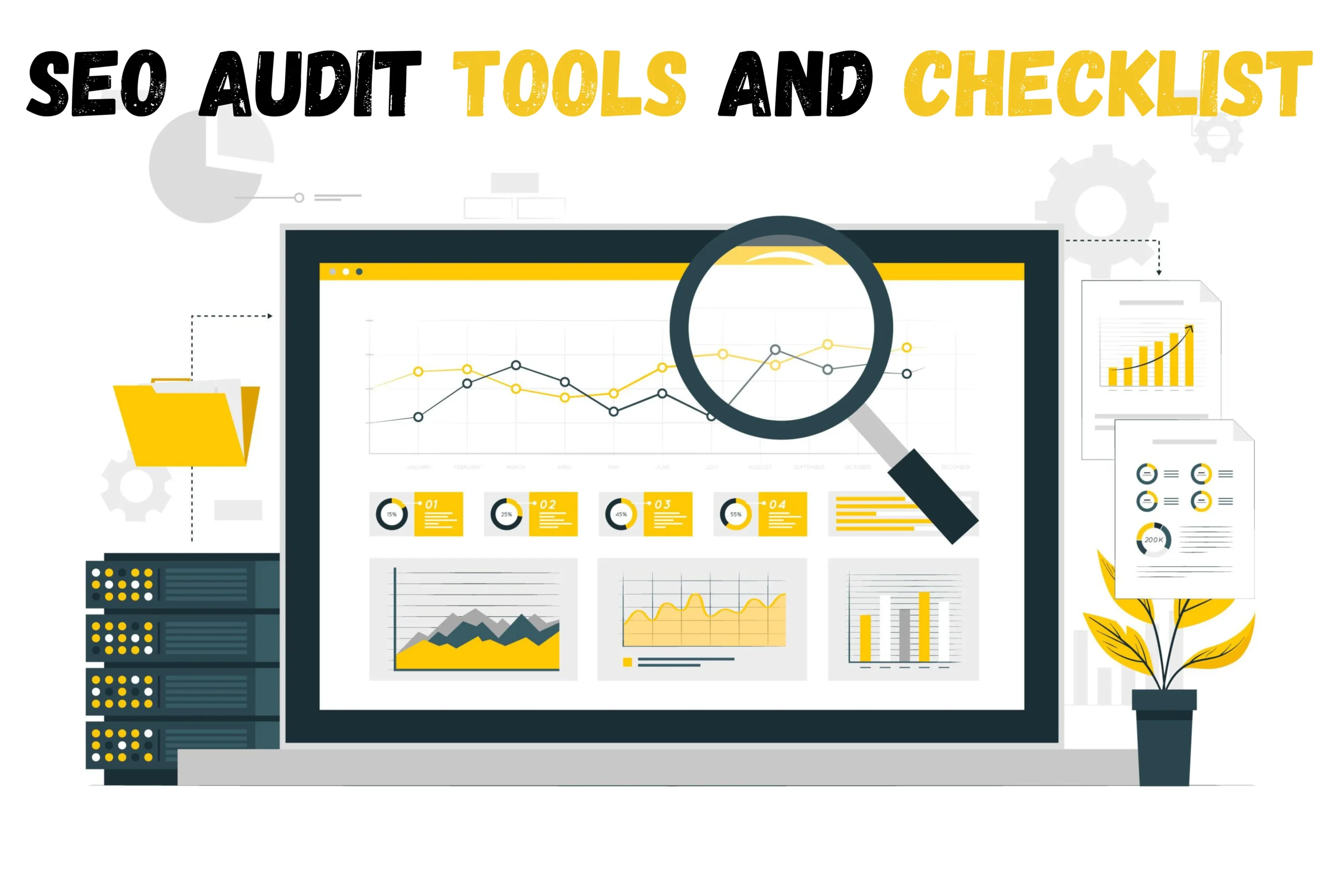Ever consider why your website isn’t showing up on Google, even though it looks great? The answer probably lies in your SEO performance. A full SEO audit helps uncover hidden issues that help your website rank higher in search engine results. Suppose it is a comprehensive health scan for your website.
A comprehensive SEO audit examines everything, from specialized SEO issues and broken links to page speed problems, outdated content, and poisonous backlinks. By fixing these problems, you can achieve better visibility, increase your business, and grow your business online.
Whether you are a freshman with a small blog or a business proprietor managing an enterprise site, this companion is acclimatized for you. We’ll walk you through each step using important SEO tools along with a complete, easy-to-follow SEO audit roster.
You don’t need to be an SEO tools expert to get started. Using reliable tools such as Ahrefs, Screaming Frog, and Google Search Console, you can determine what is effective. Let’s get started and help you get your website audited.
What is an SEO audit?
An SEO audit is a complete check of your website to see how well it follows the best guidelines for ranking in Google. In simple language, it’s a process that helps you find what’s stopping your point from appearing in search results and how to fix it.
The main pretensions of an SEO audit are to boost your website’s visibility in search, ensure it’s crawlable by search engines, and give a better user experience (UX) to users.
With an SEO audit, you check your website’s specialized setup, content, and authority to ensure it’s in perfect shape for high rankings.
Importance of a Full SEO Audit in 2025
In 2025, doing a full SEO audit is more important than ever. Google’s algorithm modifications have become more complex; do not focus your keywords on search intent and E-E-A-T. A small technical error or old content can still affect your rankings.
The SEO geography is more competitive now, with millions of businesses investing in digital visibility. However, it lacks mobile optimization, has broken links, and your page loads sluggishly. In this condition, small miscalculations can mean important business losses.
Performing a full SEO audit helps you identify these weak points beforehand. The benefits are enormous: advanced search rankings, faster site speed, a better user experience, and eventually more good leads.
Whether you’re an incipient or an established brand, regular checkups ensure your point stays aligned with the latest SEO best practices, helping you outmatch the competition and win further organic business.

Complete SEO Audit Checklist: 6 Key Areas
A complete SEO audit covers six key areas that influence your website’s achievement. Here is a breakdown of each step:
Technical SEO Audit
A technical SEO audit makes sure your site is properly crawled and detected by Google.
Checklist:
- Crawl errors: Find them utilizing Google Search Console and Screaming Frog.
- Site speed: check with PageSpeed Insights.
- Mobile flexibility: Google likes mobile-first indexing.
- HTTPS setup: Make sure your site has SSL.
- Sitemap.xml and robots.txt: Both are available and error-free
A powerful technical structure increases crawlability, indexing, and total performance.
On-Page SEO Audit
On-page SEO focuses on optimizing unique pages for all users and search engines.
Checklist:
- Title & meta description modification: Ensure keyword, compelling titles
- Heading structure: Use appropriately nested headings for readability
- Internal linking: Guide readers and bots through linked content
- Image alt text: Boost accessibility and SEO
- Clean URLs: Short, easy to read, and keyword-friendly
- Semantic keyword usage: Naturally implement related terms to boost significance
Well-optimized pages help improve rankings and enhance reader engagement.
Off-Page SEO Audit
An off-page SEO audit determines your site’s backlink profile and domain authority (DA).
Checklist:
- Check backlink profile: Use Ahrefs or SEMrush to analyze link quality.
- Reject toxic links: Remove links from spammy domains.
- Competitor link comparison: Identify backlink gaps using Ahrefs’ Link Intersect tool
A strong off-page profile signals trustworthiness and boosts your site’s authority in Google’s eyes.
Content Audit
Your content should be helpful and aligned with the reader’s search intent.
Checklist:
- Find duplicate content: Utilize tools like Siteliner.
- Update old content: Add new content, images, or FAQs.
- Content performance analysis: Use Google Analytics to track rejection rates and session duration
- Utilize CTAs and internal links: Encourage engagement and effective calls to action.
The best content not only performs excellently but also keeps users coming back.

UX & Mobile Experience Audit
A smooth user experience (UX) increases rankings and visitor satisfaction.
Checklist:
- Mobile flexibility: Your site must work on all screen sizes.
- Navigation & Layout: Clear menus, CTAs, and easy design
- Reduce bounce rate: reach users with value-driven content and visuals.
- Improve readability and font contrast: Utilize clear fonts, spacing, and color contrast.
Google rewards efficient design with better visibility and higher engagement.
Local SEO Audit
For businesses serving local markets, local SEO ensures you show up in nearby searches.
Checklist:
- Google Business Profile: Customize your listing
- NAP consistency: verify that the name, address, and phone number are the same across sites
- Reviews & local citations: Create trust with client reviews and listings on websites.
Local SEO increases traffic, calls, and revenue for established businesses.
Recommended SEO Tools
When doing a full SEO audit, having the right tools makes the job easier, brisker, and far more accurate. Below is a chosen list of SEO tools every marketer or blogger should know, along with what each tool does.
A must-have tool that helps you cover your website’s presence in Google Search. Use it to check for indexing issues, track keyword performance, and identify crawl errors.
This important desktop scanner scans your entire point like a search engine. It’s ideal for spotting broken links, redirects, missing metadata, and indistinguishable content.
One of the most trusted one-by-one SEO tools. Ahrefs is excellent for backlink analysis, keyword exploration, point checkups, and checking competitor SEO strategies.
Concentrated on content optimization, Cybersurfer helps you ameliorate your rankings by using semantic keywords and assessing top-performing pages in your niche.
A page speed testing tool that shows you what’s slowing down your page. It offers practical suggestions to boost your page’s loading time and core web vitals.
Both platforms give important toolsets for keyword shadowing, on-page SEO checkups, and competitive analysis.
Monitor your business sources, user behavior, bounce rate, and conversion paths. It’s crucial to measure how SEO changes affect readers’ engagement.
Use these tools regularly to stay ahead of your SEO challenges.
How Often Should You Do an SEO Audit?
One of the most common questions businesses ask is, How often should I perform an SEO audit? The answer depends on your website’s size, competition, changing your design, and more things.
For most websites, it’s recommended to conduct light SEO checkups monthly and perform a full SEO audit every 3–4 months. Monthly reviews can help you find minor issues.
A professional audit should be scheduled quarterly, most particularly if your website publishes frequent content. This ensures you’re staying ahead of Google’s changing search algorithms.
Additionally, you should always run an SEO audit:
- After a major Google update
- After a site redesign
- Before establishing a service page
- When you see a significant change in rankings or traffic
Consistent SEO audits help maintain visibility and reader experience.
Conclusion:
A full SEO audit is no longer voluntary; it’s a critical part of digital growth in 2025. As search machines continue to improve, your website must employ stylish SEO practices to stay relevant.
To recap, a successful SEO audit covers six essential areas: Technical SEO for crawlability and page health, On-page SEO to optimize the structure and keywords, Off-page SEO to estimate backlinks and authority, Content inspection to ensure quality, applicability, user experience (UX), and mobile-benevolence
Regular checkups help you uncover existing issues, boost rankings, and convert further callers into guests. Whether you’re managing a particular blog or auditing your site, it should be a harmonious routine, not a one-time task.
Ready to take action?
Try it yourself using the tools, or let our experts handle it for you.
Need help? Contact us for a free SEO audit today, and let’s take your website to the next level.







